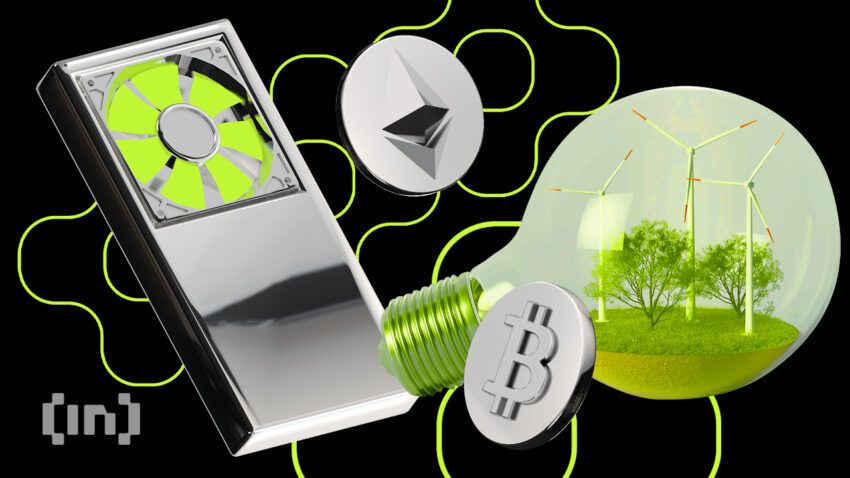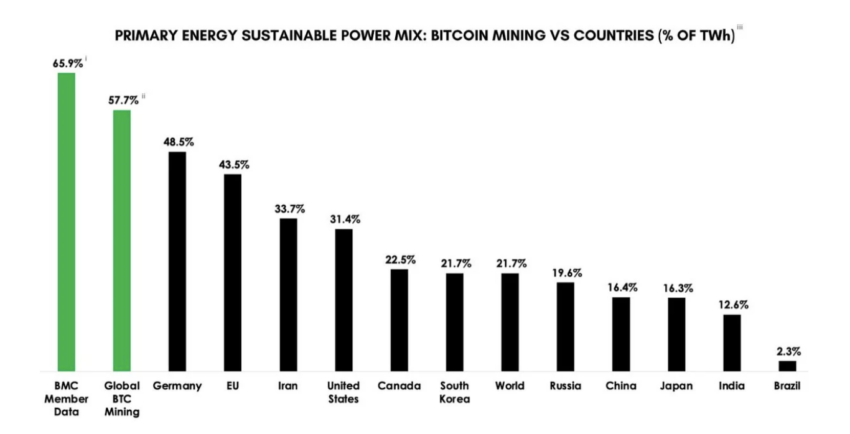Cryptocurrencies like bitcoin require new coins to be mined by computers solving equations, a process called ‘mining’. This process was designed to reward miners with bitcoins approximately every 10 minutes. To maintain this design, as more computers work to solve the equations, the sums become harder to solve. This has led miners to apply even more processing power, ultimately creating an ever-growing demand for energy.
Got something to say about Bitcoin’s energy usage or anything else? Write to us or join the discussion in our Telegram channel. You can also catch us on Tik Tok, Facebook, or Twitter.
Calculating the energy used
One way to evaluate energy usage in the context of cryptocurrencies and DeFi is to calculate the number of computational sums, or hashes, conducted every second in processes like bitcoin mining and smart contract execution. Then, determine the amount of electricity each sum requires. These calculations require you to consider a vast number of hashes, typically measured in millions (megahashes) or billions (gigahashes).
This approach is not only crucial for understanding the energy impact of maintaining blockchain networks but also provides insight for those looking to buy bitcoin or engage in DeFi activities, as it underscores the technological and environmental aspects of these digital transactions.
Bitcoin mining’s stigma

Bitcoin mining, a cornerstone of the blockchain and crypto community, has long been perceived as an energy-consuming giant within both the DeFi sector and the wider digital currency landscape. This view highlights the intensive energy requirements associated with maintaining the Bitcoin network through the mining process.
Of this, approximately 99% of the impact came from the crypto mining equipment. One of the most significant factors influencing this was the location of the miners. For example, countries that use mostly fossil fuels have a much bigger impact than countries that utilize greener energies.
The results also showed that the environmental impact would decrease if the equipment became more efficient or if miners relocated to colder climates where cooling computers require less energy. To ensure that the profit made from the reward outweighs the cost of electricity, many people choose to set up in countries where the power is cheap, like China, Kuwait, and Iceland.
Notably, El Salvador has already embraced this trend by adopting bitcoin as legal tender, further supporting the cryptocurrency’s integration into mainstream economies and potentially influencing future mining locations.
Crypto mining energy usage

This chart presents the sustainability of the power mix in bitcoin mining in comparison to various countries. The global average for bitcoin mining’s sustainable power mix is 48.5%. Comparatively, this exceeds the figures reported for Germany, the EU, and the United States. Consequently, it indicates that bitcoin mining, on average, is adopting greener energy sources more rapidly. This trend positions bitcoin mining ahead of several of the world’s leading economies in terms of energy sustainability.
In another study, bitcoin was estimated to be responsible for 60% to 77% of all the electricity used by crypto assets worldwide as of August 2022. Ethereum will be responsible for 20% to 39%. However, with Ethereum’s shift from proof-of-work to proof-of-stake in Ethereum 2.0, the platform has not only transitioned its consensus mechanism but also made a substantial impact in the DeFi space by reducing its carbon footprint by nearly 99.99%. This change represents a significant environmental advancement within the blockchain and DeFi sectors.
Greener alternatives
Bitcoin mining tends to be more prevalent in regions with ample renewable energy sources like solar, wind, or hydro-power. In the U.S., extensive hydroelectricity implementation drives lower power costs in Washington State, where a significant portion of mining occurs.
This reliance on renewable energy sources not only positions bitcoin as a greener alternative in the cryptocurrency world but also aligns it with global sustainability goals, offering an environmentally conscious choice in the realm of digital currencies and blockchain technology.
Frequently asked questions
How much energy does Ethereum use?
Is cryptocurrency bad for the environment?
Does bitcoin mining take a lot of power?
Can I mine bitcoin at home?
What is the carbon footprint of a single mined bitcoin?
What is the relationship between bitcoin mining and renewable energy adoption?
Is ethereum more energy efficient than bitcoin?
Disclaimer
In line with the Trust Project guidelines, the educational content on this website is offered in good faith and for general information purposes only. BeInCrypto prioritizes providing high-quality information, taking the time to research and create informative content for readers. While partners may reward the company with commissions for placements in articles, these commissions do not influence the unbiased, honest, and helpful content creation process. Any action taken by the reader based on this information is strictly at their own risk. Please note that our Terms and Conditions, Privacy Policy, and Disclaimers have been updated.




